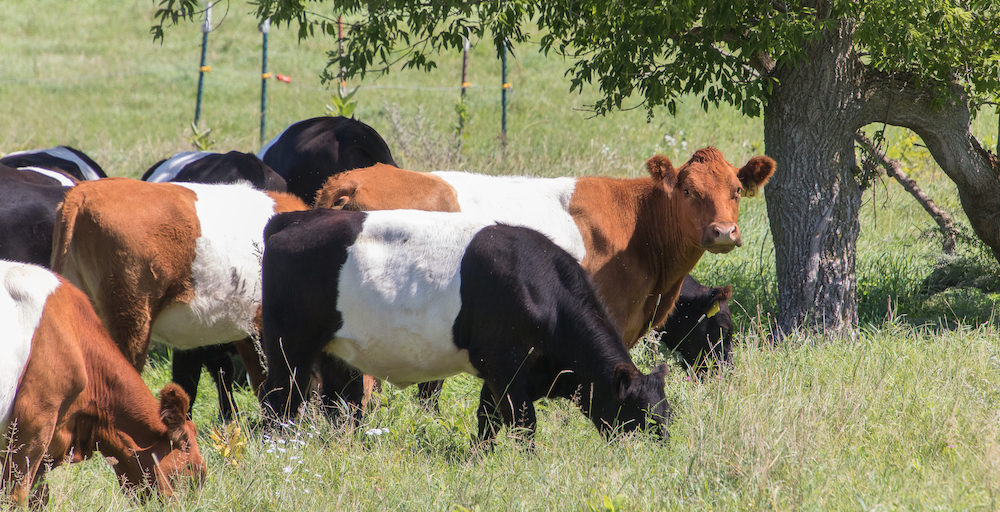Wasn’t it just Memorial Day? Yup, another growing season is coming to an end. Fog hangs heavy over the pastures in the mornings. The days are getting shorter and the evenings much cooler. Trees are turning on nearby hills. The sumac at the northern fence post is blazing red, as are the hawthorn berries. Bees are a loud cloud above the chive blossoms, and bright yellow heads of goldenrod sway in every ditch and fence line.
- Bees busy in the chives
- Thorny hawthorn
- Stiff goldenrod
The herd has been grazing happily all summer and fall. As usual, they take a mid-morning lie-down from about 9:00 AM to 11:00 AM. It’s a sign of a healthy, contented herd.
And that’s a major goal: healthy cattle raised on healthful grass. Another is to work in harmony with the season.
And so, it’s time: We begin the 2021 beef harvest in a few days. If you’d like to order, please do so early to secure your beef.
Please know that you don’t have to buy half a cow to enjoy the great taste and high nutrition of grass-fed-grass-finished beef. Our variety packages start at just 30 pounds. (A variety package includes ground, steak and roasts.)
Don’t hesitate to call, email or text with any questions. We’d like to be your farmers.
Sylvia & Dave Toftness













